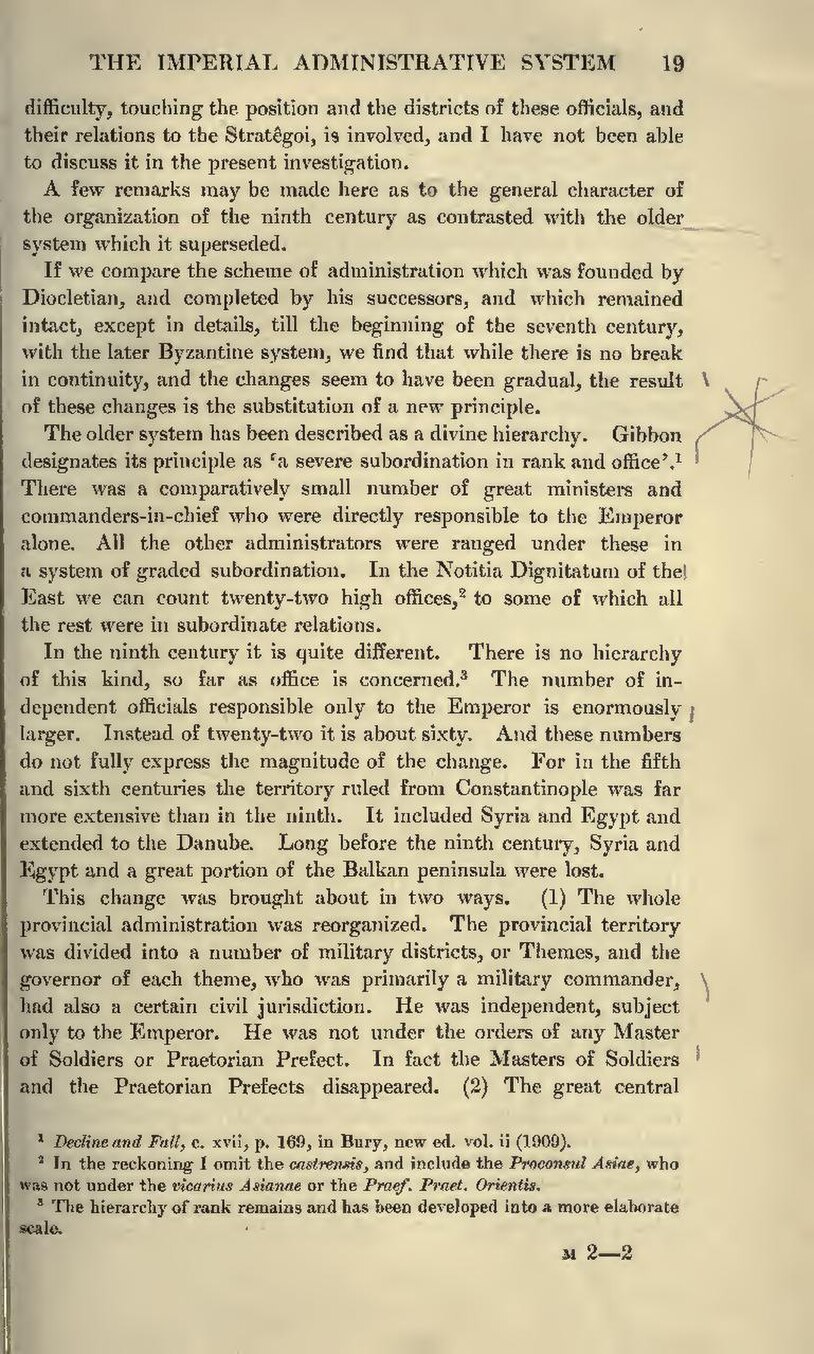difficulty, touching the position and the districts of these officials, and their relations to the Stratêgoi, is involved, and I have not been able to discuss it in the present investigation.
A few remarks may be made here as to the general character of the organization of the ninth century as contrasted with the older system which it superseded.
If we compare the scheme of administration which was founded by Diocletian, and completed by his successors, and which remains intact, except in details, till the beginning of the seventh century, with the later Byzantine system, we find that while there is no break in continuity, and the changes seem to have been gradual, the result of these changes is the substitution of a new principle.
The older system has been described as a divine hierarchy. Gibbon designates its principle as 'a severe subordination in rank and office'.[1] There was a comparatively small number of great ministers and commanders-in-chief who were directly responsible to the Emperor alone. All the other administrators were ranged under these in a system of graded subordination. In the Notitia Dignitatum of the East we can count twenty-two high offices,[2] to some of which all the rest were in subordinate relations.
In the ninth century it is quite different. There is no hierarchy of this kind, as far as office is concerned.[3] The number of independent officials responsible only to the Emperor is enormously larger. Instead of twenty-two it is about sixty. And these numbers do not fully express the magnitude of the change. For in the fifth and sixth centuries the territory ruled from Constantinople was far more extensive than in the ninth. It included Syria and Egypt and extended to the Danube. Long before the ninth century, Syria and Egypt and a great portion of the Balkan peninsula were lost.
This change was brought about in two ways. (1) The whole provincial administration was reorganized. The provincial territory was divided into a number of military districts, or Themes, and the governor of each theme, who was primarily a military commander, had also a certain civil jurisdiction. He was independent, subject only to the Emperor. he was not under the orders of any Master of Soldiers or Praetorian Prefect. In fact the Masters of Soldiers and the Praetorian Prefects disappeared. (2) The great central
